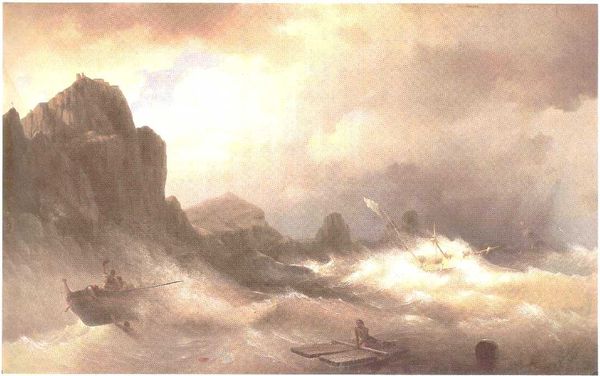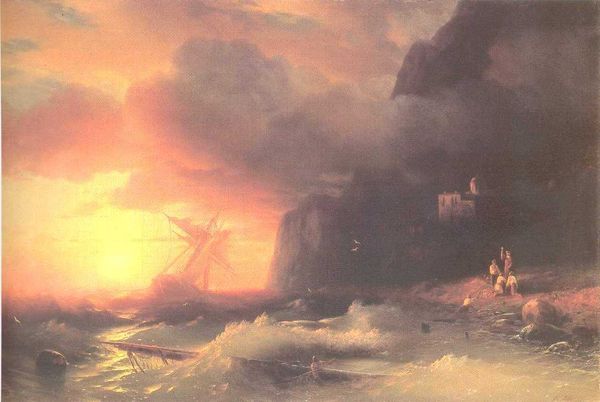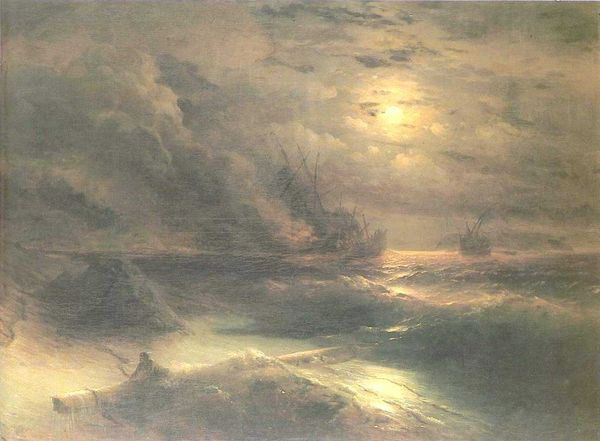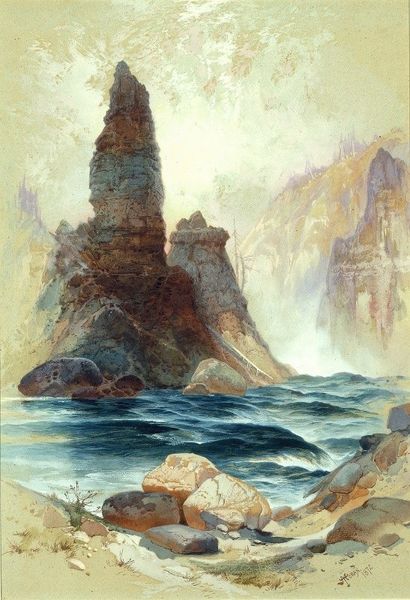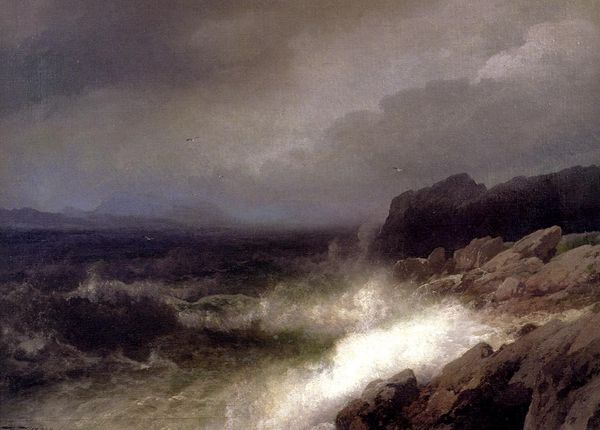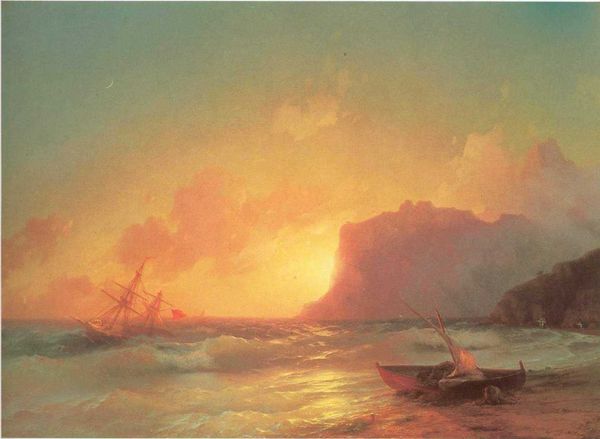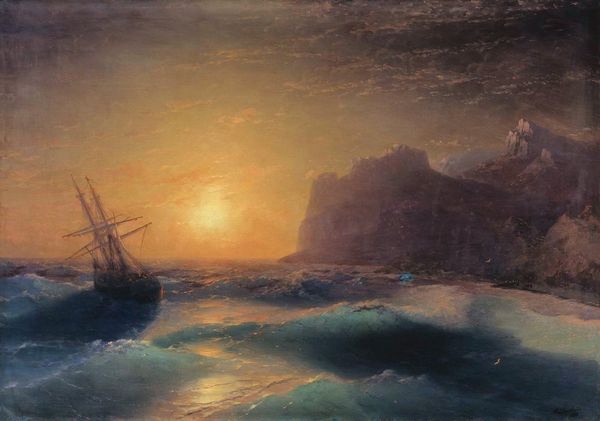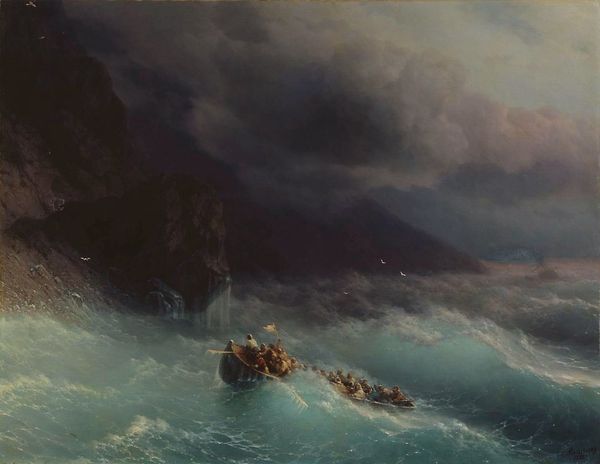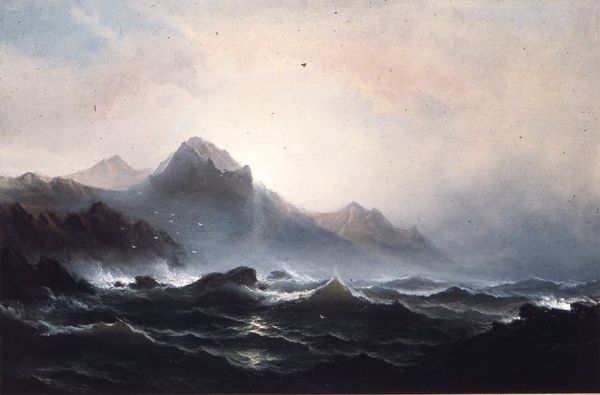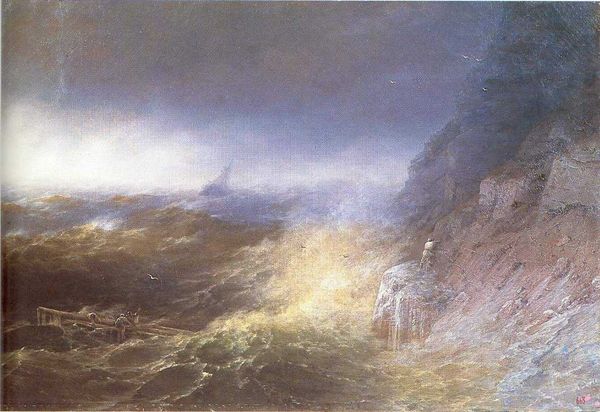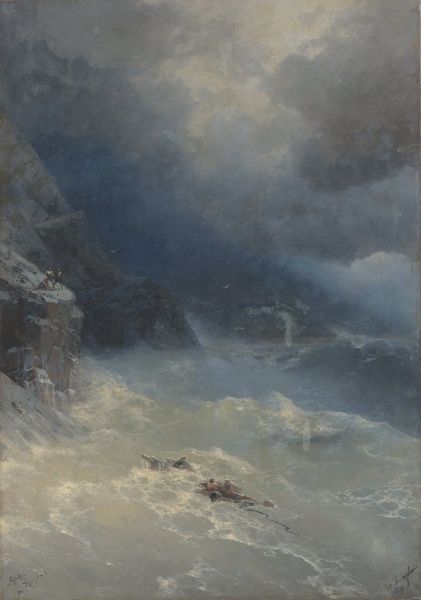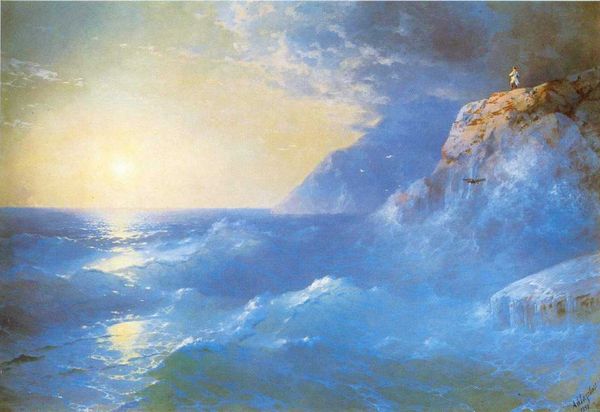
Dimensions: 119 x 168 cm
Copyright: Public domain
Editor: So, here we have Aivazovsky’s "Sea," painted in 1864, using oil. I’m immediately struck by the drama of it. The way the moonlight breaks through the clouds…it's both beautiful and ominous. What do you see in this piece? Curator: I see a powerful commentary on Russia's relationship with the sea, particularly during Aivazovsky’s time. Consider the context: he was the principal painter of the Russian Navy. This isn’t just a pretty seascape; it reflects imperial ambitions and the control of maritime power. How does that reading resonate with you given the precarious state of the ship? Editor: That’s interesting. I was focusing more on the Romantic aspects - the sublime power of nature, the tiny ship overwhelmed by the ocean. So, the placement of the boat speaks of those ambitions that might meet an unpredictable, maybe even violent end? Curator: Precisely. Aivazovsky isn't just depicting the sea, he's presenting Russia's fraught relationship with it. He paints the image that Russia promoted, the mastery of the seas, but with a glimpse of something closer to reality as well. We’ve got this awesome control coupled with possible disaster. Does that change how you see those dramatic clouds now? Editor: It does. I initially interpreted the dramatic lighting as purely aesthetic. But now I see how it might symbolize the unpredictable nature of power, and the potential for darkness beneath the surface. I had only been thinking of romanticism as style but can appreciate what was happening in society at the time, and in the patron’s interest. Curator: And understanding that context enriches the viewing experience. We start to see the painting not just as an image, but as a historical document, a piece of visual rhetoric. Editor: Definitely gave me a lot to consider for a pretty seascape painting. Thank you.
Comments
No comments
Be the first to comment and join the conversation on the ultimate creative platform.
